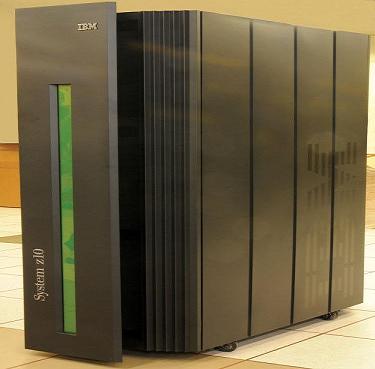Dumps
 Please! Verify all details or
suggestions with the appropriate vendor and / or vendor's manuals. Please! Verify all details or
suggestions with the appropriate vendor and / or vendor's manuals.
Types of system dumps
z/OS V1R12.0 DFSMSdfp Diagnosis
GY27-7618-13
The following table describes the various types of dumps. If a dump is
known by more than one name, the table also mentions the alternate name.
For a sample of the kind of information in the formatted portion of a typical SVC dump, see Abend keyword.
The following table describes the various types of dumps. If a
dump is known by more than one name, the table also mentions the
alternate name.
For a sample of the kind of information in the formatted portion of a typical SVC dump, see Abend keyword.
Analyzing Dumps
z/OS V1R12.0 MVS Interactive Problem Control System (IPCS) User's Guide
SA22-7596-07
Dumps produced by an MVS™ system fall into two categories:
Formatted dumps: SYSABEND and SYSUDUMP ABEND dumps and SNAP dumps. IPCS cannot be used with formatted dumps.
Unformatted dumps: SVC dumps, SYSMDUMP ABEND dumps, and stand-alone dumps. IPCS formats and analyzes unformatted dumps.
When you submit unformatted dump data sets to IPCS, it simulates
dynamic address translation (DAT) and other storage management
functions to recreate the system environment at the time of the dump.
IPCS reads the unformatted dump data and translates it into words. For
example, IPCS can identify the following:
Jobs with error return codes
Resource contention in the system
Control block overlays.
IPCS also helps your own dump analysis. For example, you can:
Format control blocks. IPCS inserts field names into the output and displays the data in columns by field.
Browse unformatted dump storage. IPCS allows you to easily follow
pointers to other locations in the dump. It also retains addresses of
certain locations in the dump.
Reduce the size of a stand-alone dump. You can reduce the size of a
stand-alone dump as you transfer it from tape to a direct access
storage device (DASD) for IPCS processing.
SYSABEND
Defined by JCL (SYSOUT=A)
Formatted
Normally SYSOUT=A
Caused By: An abend condition (and only taken if the step contains a SYSABEND DD statement).
SYSUDUMP
Defined by JCL (SYSOUT=A)
Formatted Normally SYSOUT=A
Caused By: An abend condition (and only taken if the step contains a SYSUDUMP DD statement).
SYSMDUMP
Defined by JCL (DSN=xxx)
Machine readable
Normally read through IPCS
Caused By:: An abend condition (and only taken if the step contains a SYSMDUMP DD statement).
STANDALONE
Defined by installation (tape or disk)
Machine readable
Printed and formatted through IPCS
Caused By: Operator doing an IPL of the standalone dump program.
DYNAMIC (SVC Dump or SDUMP)
SYS1.DUMPxx
Machine readable
Printed and formatted through IPCS
Operator entering DUMP command.
FRR (SVC Dump or SDUMP)
SYS1.DUMPxx
Machine readable
Printed and formatted through IPCS
Caused By: DFSMS ESTAE exit or functional recovery routine detecting an
error. (For example, an ABEND071 "PSW restart key depressed" causes an
FRR to take a dump.)
Notes:
For a complete description of the IPCS dump formatter, see z/OS MVS IPCS User's Guide
The IPCS SUMDUMP option provides a useful summary of failure-related information from SYS1.DUMPxx data sets.
For detailed information about diagnosing dumps, see z/OS MVS Diagnosis: Tools and Service Aids.
Website
|





